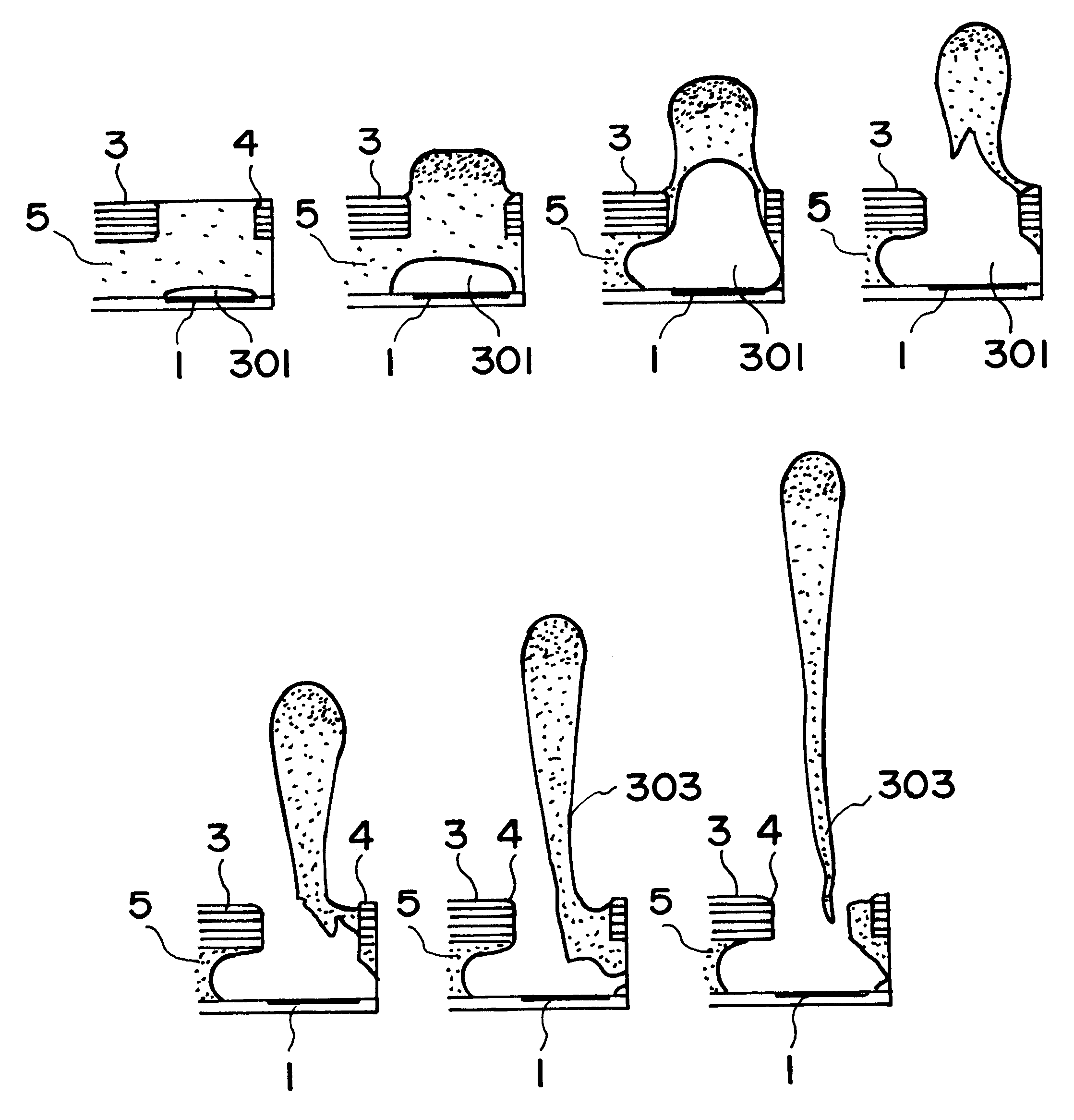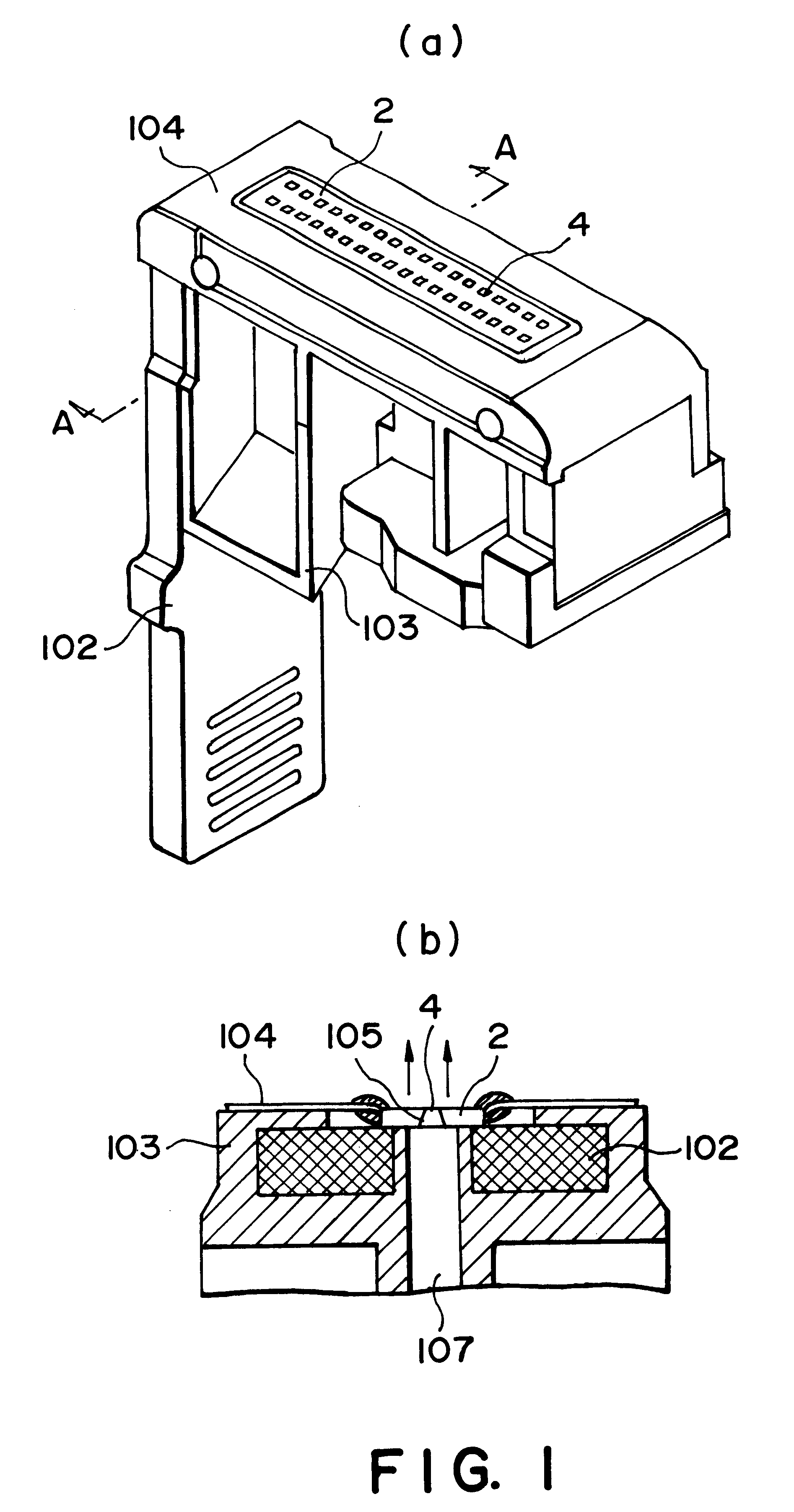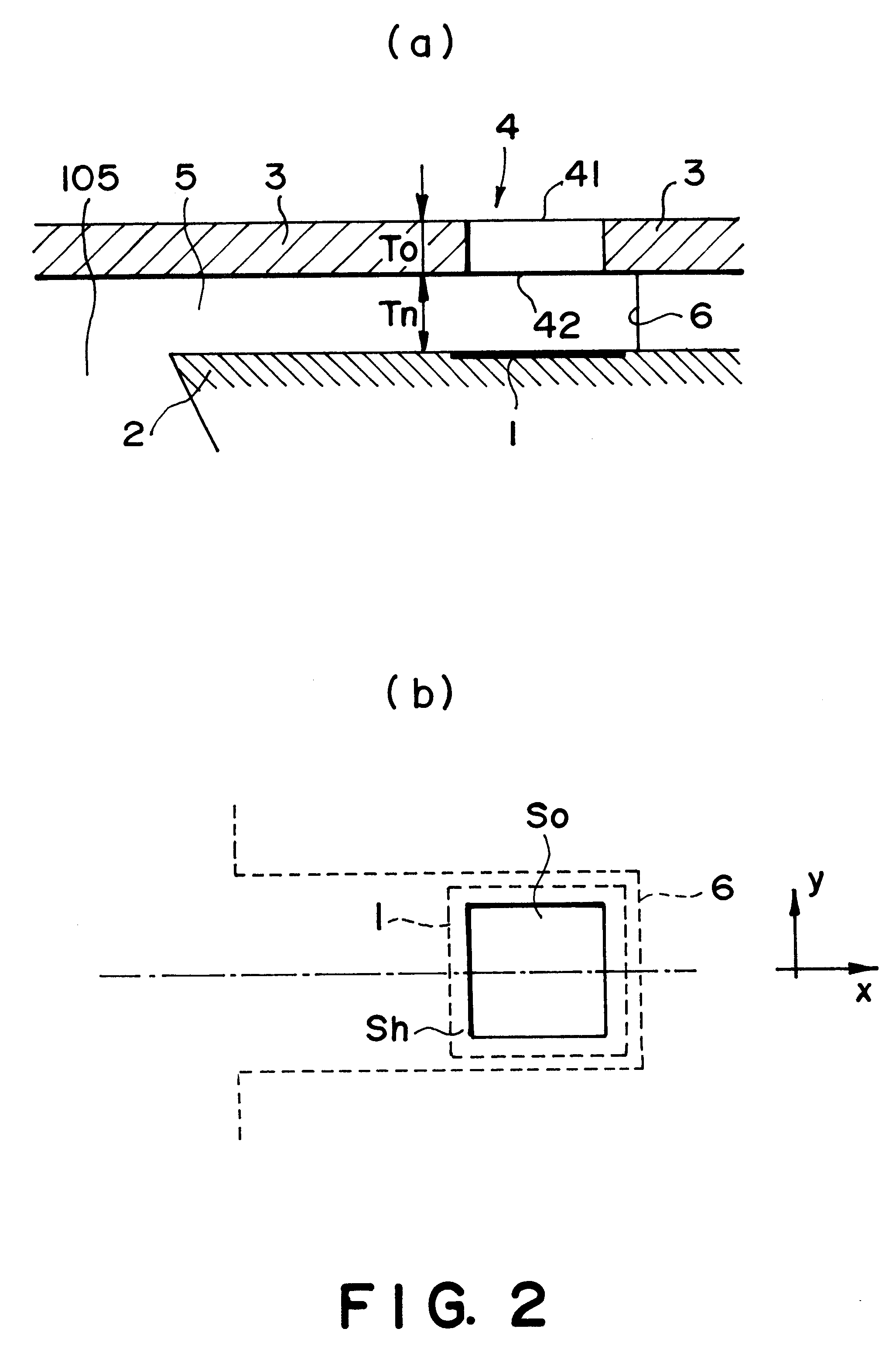Liquid ejecting method and liquid ejecting head
a liquid ejecting head and liquid ejecting technology, applied in printing and other directions, can solve the problems of excessive bubble growth, increase the number of liquid droplets to be ejected, and reduce the recording speed, and achieve the effect of high speed
- Summary
- Abstract
- Description
- Claims
- Application Information
AI Technical Summary
Benefits of technology
Problems solved by technology
Method used
Image
Examples
embodiments 3-5
In Embodiments 3-5, the same ink as the one employed in Embodiments 1 and 2 was employed.
As for the height Tn of each liquid path, it was made to be 12 .mu.m in Embodiments 3 and 4, and 6 .mu.m in Embodiment 5 . As for the thickness To of the orifice plate, it was made to be 7 .mu.m in Embodiment 3, and 6 .mu.m in Embodiment 4. In Embodiment 5, it was made to be 9 .mu.m.
In Comparative Examples 5-10, the size So of each ejection orifice was made to be 220 .mu.m.sup.2, 314 .mu.m.sup.2, 227 .mu.m.sup.2, 202 .mu.m.sup.2 (14.2 .mu.m square), 324 .mu.m.sup.2, and 324 .mu.m.sup.2, correspondingly. The size Sh of the heating surface of each heater was made to be the same as that for Embodiments 3-5, which was 570 .mu.m.sup.2 (24 .mu.m.times.24 .mu.m). The height Tn of each liquid path in Comparative Examples 5-10 was made to be 12 .mu.m, 4 .mu.m, 8 .mu.m, 12 .mu.m, 6 .mu.m and 5.0 .mu.m, correspondingly, and the thickness To of each orifice plate was made to be 9 .mu.m, 11 .mu.m, 9 .mu.m, 9...
embodiment 4
In Embodiment 4 and Comparative Example 8, the opening of each ejection orifice was square, which was different from the shapes of the openings in other embodiments and comparative examples, in which they were in the form of a true circle. Even in Comparative Example 6 in which the shape of the opening of the ejection orifice was truly circular, the sudden ejection failure occurred just as in the other heads, the openings of the ejection orifices of which were truly circular. In Embodiment 4, D / To was 2.5, which was desirable since it was greater than 2. Even though the opening of the ejection orifice was square, the sudden ejection failure did not occur. In consideration of the deformation caused by the pressure generated by bubbles, the thickness To of the orifice plate is desired to be no less than 4 .mu.m.
Further, in order to accurately evaluate the aforementioned embodiments and comparative examples in terms of color density and sudden ejection failure, the liquid ejecting head...
PUM
 Login to View More
Login to View More Abstract
Description
Claims
Application Information
 Login to View More
Login to View More - R&D
- Intellectual Property
- Life Sciences
- Materials
- Tech Scout
- Unparalleled Data Quality
- Higher Quality Content
- 60% Fewer Hallucinations
Browse by: Latest US Patents, China's latest patents, Technical Efficacy Thesaurus, Application Domain, Technology Topic, Popular Technical Reports.
© 2025 PatSnap. All rights reserved.Legal|Privacy policy|Modern Slavery Act Transparency Statement|Sitemap|About US| Contact US: help@patsnap.com



